Digital Monitoring Products Account Groups User guide
- Type
- User guide

LT-0847 © 2008 Digital Monitoring Products, Inc.
8293
This section discusses how to use the Account
Groups Module. The Account Groups Module
enables users to assign, update, change, or
delete user codes, profiles, schedules, output
schedules and holidays to multiple XR100/XR500
Series panels using a batch operation rather than
accessing each panel individually to make
changes. The Account Groups Module works
with Remote Link™ and System Link™ software
programs.

ii

Account Group User’s Guide i
System Link™
Remote Link™
Software Product License Agreement
The terms of this Software Product License Agreement (“SPLA”) for the Software Product(s) System Link™ and/or Remote Link™
are effective immediately upon you (either a single entity or individual) accepting a copy of the Software Product and the first
use of it by you, your employees or an authorized subcontractor. These Software Products are protected by copyright laws and
international copyright treaties, as well as other intellectual property laws and treaties. These Software Products are licensed,
not sold.
Therefore, subject to the terms and conditions of this SPLA, your Provider Digital Monitoring Products, Inc., will provide you
with a copy of Remote Link™ or, in the case of System Link™, your Provider either Digital Monitoring Products, Inc., or one of its
authorized representatives will provide you with a copy System Link™ (which System Link™ and Remote Link™ singly or
collectively according to context herein are referred to as the Software Product). You may not use the Software Product until
you have read and accepted all of the terms of this SPLA by checking the “I accept” checkbox and clicking the “Finish” button.
Digital Monitoring Products, Inc., (or “DMP”) is the holder of the intellectual property holdings embodied in System Link™ and
Remote Link™, including without limitation all copyright rights.
System Link™ and Remote Link™ include computer software and associated media, printed materials, and “online” or electronic
documentation (referred to collectively or singly according to context as the Software Product). The System Link™ and Remote
Link™ also include any updates, “plug-ins,” modules and/or supplements to the original System Link™ or Remote Link™ provided
to you by DMP or authorized representative, including without limitation software modules such as Advanced Reporting, Alarm
Monitoring, Command Center, Account Groups, or Link Server.
By installing, copying, downloading, accessing or otherwise using System Link™ and/or Remote Link™, you agree to be bound by
the terms of this SPLA. If you do not agree to the terms of this SPLA, do not install or use the Software Product. You may,
however, return it for a full refund.
1. Permitted Uses and Restrictions on Use
A Remote Link™ licensee may install and use its DMP provided copy and install and use additional copies on any number of
computers including a network server as well as laptops for the limited purposes of providing support service to end-users of
Digital Monitoring Product, Inc.’s panel products and allied lines of alarm and security communications equipment; provided
that all users are either employees of said Remote Link™ licensee or authorized subcontractors who are comparably restricted in
usage of the Remote Link™ product, namely, that being for the limited purposes of providing support service to end-users of
Digital Monitoring Product, Inc.’s panel products and allied lines of alarm and security communications equipment. A Remote
Link™ licensee and/or every Remote Link™ user agrees not to copy, sell, resell, rent or sub-license (including offering Remote
Link™—or any derivation or component thereof—to third parties on an applications service provider or time-sharing basis), lease,
loan, redistribute, or create a derivative work of any portion of Remote Link™, or provide use of Remote Link™, or access to
Remote Link™ in competition with sales or uses of System Link™ for and by end-users of Digital Monitoring Product, Inc.’s panel
products and allied lines of alarm and security communications equipment.
A System Link™ licensee may install and use one copy of System Link™ on a single computer, including network server, for the
purpose of providing communications management of Digital Monitoring Product, Inc.’s panel products and allied lines of alarm
and security communications equipment; provided that all such Digital Monitoring Product, Inc.’s panel products and allied lines
of alarm and security communications equipment have duly registered accounts with Digital Monitoring Product, Inc., or
authorized representative thereof. It being further provided that, all parties hereto contemplate that various devices including
without limitation printers and the like are indeed communicators to a System Link™ machine but are not bound to be assigned
an account. A System Link™ licensee agrees not to copy, sell, resell, rent or sub-license (including offering System Link™—or
any derivation or component thereof—to third parties on an applications service provider or time-sharing basis), lease, loan,
redistribute, or create a derivative work of any portion of System Link™, or provide use of System Link™, or access to System
Link™ in competition with other sales or uses of System Link™ for and by other end-use parties of Digital Monitoring Product,
Inc.’s panel products and allied lines of alarm and security communications equipment.
2. Your Registration Obligations
In consideration of your use of the Software Product, you agree to: (a) provide true, accurate, current and complete
information about yourself as prompted your Provider’s registration form(s) (such information being the “Registration Data”)
and (b) maintain and promptly update the Registration Data to keep it true, accurate, current and complete. If you provide any
information that is untrue, inaccurate, not current or incomplete, or the Provider has reasonable grounds to suspect that such
information is untrue, inaccurate, not current or incomplete, the Provider may suspend or terminate your license and you must
discontinue any and all current or future use of the Software Product (or any portion thereof).

ii Account Group User’s Guide
3. Fees
You agree to pay the then-current license fee associated with obtaining a copy of the Software Product. Your Provider reserves
the right to modify its fee schedule with or without notice. For instance, each of one copy of either the native Remote Link™
product or the native System Link™ product will be provided pursuant to a one-time license fee set by the applicable provider
thereof. “Plug-in” modules for either will be provided pursuant to a license fees computed on a basis such as the following:
Plug-in module licensee will pay a license fee according to (the reporting requirements therefore stated above) the total
number of account numbers that are reporting into that licensee’s System Link™ or Remote Link™ copy wherein the license fee
schedule for such a “Plug-in” module will vary according to whether between 1-10 accounts are reporting, 11-50 accounts are
reporting, 51-100 accounts are reporting, 101-500 accounts are reporting, or in excess of 500 accounts are reporting.
4. Description of Other Rights and Limitations
Limitations on Reverse Engineering, Decompilation, and Disassembly. You may not reverse engineer, decompile, or disassemble
the Software Product, except and only to the extent that such activity is expressly permitted by applicable law notwithstanding
this limitation.
Separation of Components. The Software Product is licensed as a single product. Its component parts may not be separated for
use on more than one computer.
Trademarks. This SPLA does not grant you any rights in connection with any trademarks or service marks of your Provider or
DMP.
Termination. Without prejudice to any other rights, your Provider may terminate this SPLA if you fail to comply with the terms
and conditions of this SPLA. In such event, you must destroy all copies of the Software Product and all of its component parts.
Back-up Copy. A System Link™ licensee, after installation of one copy of the System Link™ product pursuant to this SPLA, may
keep the original media on which the System Link™ was provided by Provider solely for backup or archival purposes, or make
one other backup or archival copy only solely for backup or archival purposes. Except as expressly provided in this SPLA, no
licensee may otherwise make copies of the Software Product or the printed materials accompanying the Software Product.
5. Limited Warranty
DMP warrants that the Software Product will perform substantially in accordance with the accompanying written materials for a
period of Three (3) Years from the date of receipt.
If an implied warranty or condition is created by your state/jurisdiction and federal or state/provincial law prohibits disclaimer
of it, you also have an implied warranty or condition, BUT ONLY AS TO DEFECTS DISCOVERED DURING THE PERIOD OF THIS
LIMITED WARRANTY (THREE (3) YEARS). AS TO ANY DEFECTS DISCOVERED AFTER THE THREE (3) YEAR PERIOD, THERE IS NO
WARRANTY OR CONDITION OF ANY KIND. Some states/jurisdictions do not allow limitations on duration of an implied warranty,
so the above limitation may not apply to you. Any supplements, updates, plug-ins, or enhancement modules to the Software
Product, including without limitation, any (if any) service pack or Software Update fixes provided to you after the expiration of
the Three (3) Year Limited Warranty period are not covered by any warranty or condition, express or implied.
6. Limitation on Remedies; No Consequential or Other Damages
Your exclusive remedy for any breach of this Limited Warranty is as set forth below. Except for any refund elected by DMP,
YOU ARE NOT ENTITLED TO ANY DAMAGES, INCLUDING BUT NOT LIMITED TO CONSEQUENTIAL DAMAGES, if the Software Product
does not meet DMP's Limited Warranty, and, to the maximum extent allowed by applicable law, even if any remedy fails of its
essential purpose. The terms “Exclusion of Incidental, Consequential and Certain Other Damages” below are also incorporated
into this Limited Warranty. Some states/jurisdictions do not allow the exclusion or limitation of incidental or consequential
damages, so the above limitation or exclusion may not apply to you. This Limited Warranty gives you specific legal rights. You
may have others which vary from state/jurisdiction to state/jurisdiction.
7. Your Exclusive Remedy
DMP's and its authorized representative’s' entire liability and your exclusive remedy shall be, at DMP's option from time to time,
(a) return of the price paid (if any) for, or (b) repair or replacement of, the Software Product that does not meet this Limited
Warranty and that is returned to DMP with proof of license fee(s) paid. You will receive the remedy elected by DMP without
charge, except that you are responsible for any expenses you may incur (e.g. cost of shipping the Software Product to DMP).
This Limited Warranty is void if failure of the Software Product has resulted from accident, abuse, misapplication, abnormal use
or a virus. Any replacement Software Product will be warranted for the remainder of the original warranty period or One (1)
Year, whichever is longer. Outside the United States or Canada, neither these remedies nor any product support services
offered by DMP are available without proof of license fee(s) paid from an authorized international source.

Account Group User’s Guide iii
8. Disclaimer of Warranties
The limited warranty that appears above is the only express warranty made to you and is provided in lieu of any other express
warranties (if any) created by any documentation or packaging. Except for the limited warranty and to the maximum extent
permitted by applicable law, DMP and its authorized representatives provide the Software Product and Support Services (if any)
AS IS AND WITH ALL FAULTS, and hereby disclaim all other warranties and conditions, either express, implied or statutory,
including, but not limited to, any (if any) implied warranties or conditions of merchantability, of fitness for a particular
purpose, of lack of viruses, of accuracy or completeness of responses, of results, and of lack of negligence or lack of
workmanlike effort, all with regard to the Software Product, and the provision of or failure to provide Support Services. ALSO,
THERE IS NO WARRANTY OR CONDITION OF TITLE, QUIET ENJOYMENT, QUIET POSSESSION, CORRESPONDENCE TO DESCRIPTION
OR NON-INFRINGEMENT WITH REGARD TO THE SOFTWARE PRODUCT.
9. Exclusion of Incidental, Consequential and Certain Other Damages
To the maximum extent permitted by applicable law, in no event shall DMP or its authorized representatives be liable for any
special, incidental, indirect, or consequential damages whatsoever (including, but not limited to, damages for loss of profits or
confidential or other information, for business interruption, for personal injury, for loss of privacy, for failure to meet any duty
including of good faith or of reasonable care, for negligence, and for any other pecuniary or other loss whatsoever) arising out
of or in any way related to the use of or inability to use the Software Product, the provision of or failure to provide Support
Services, or otherwise under or in connection with any provision of this SPLA, even in the event of the fault, tort (including
negligence), strict liability, breach of contract or breach of warranty of DMP or any authorized representative, and even if DMP
or its authorized representative has been advised of the possibility of such damages.
10. Limitation of Liability and Remedies
Notwithstanding any damages that you might incur for any reason whatsoever (including, without limitation, all damages
referenced above and all direct or general damages), the entire liability of DMP or any of its authorized representatives under
any provision of this SPLA and your exclusive remedy for all of the foregoing (except for any remedy of repair or replacement
elected by DMP with respect to any breach of the Limited Warranty) shall be limited to the greater of the amount actually paid
by you for the Software Product or U.S.$5.00. The foregoing limitations, exclusions and disclaimers described above shall apply
to the maximum extent permitted by applicable law, even if any remedy fails its essential purpose.
11. Survival
All representations, warranties, Sections, 5, 6, 7, 8, 9, 10 and 11 in this SPLA shall survive the termination of this SPLA.
12. General
You agree that this is the complete and exclusive statement of the Agreement among you and DMP and your Provider (if other
than DMP), which supersedes all proposals, oral or written, and all other communications relating to the subject matter of this
Agreement.
If any of the provisions, or portion thereof, of this Agreement are invalid under any applicable statute or rule of law, they are to
that extent to be deemed omitted.
This Agreement shall be governed by the laws of the State of Missouri.

iv Account Group User’s Guide
Account Groups Module™
Copyright 2002-2008
Digital Monitoring Products, Inc.
All Rights Reserved
Information furnished by DMP is believed to be accurate and reliable.
The information in this user's guide is subject to change without notice. The software described herein is furnished under a
license agreement. The software may be used or copied only in accordance with the terms of the agreement.
No part of this document may be reproduced or transmitted in any form or by any means, electronic or mechanical, including
photocopying, recording, or information storage and retrieval systems, for any purpose other than the purchaser's personal use,
without the express written permission of Digital Monitoring Products, Inc.
Windows™ is a trademark of Microsoft® Corporation
Unless otherwise noted, all names of companies, street addresses, and persons contained herein are part of a completely
fictitious scenario and are designed solely to document the use of the program.

Account Group User’s Guide v
Table of Contents
Account Groups ............................................................................................................... 1
Basic Requirements .................................................................................................................................... 1
Compatible DMP Command Processor™ Panels ......................................................................................... 1
Computer Requirements ............................................................................................................................. 1
Computer Configurations ............................................................................................................ 1
Installing the Account Groups Module ....................................................................................................... 2
Registering the Account Groups Module .......................................................................................... 2
Activating the Account Groups Module ............................................................................................ 2
Account Groups Module Licensing Levels ......................................................................................... 3
Upgrading Your Account Groups Module License ................................................................................ 3
Activating the License Upgrade .................................................................................................... 3
Using Account Groups ..................................................................................................... 4
Programming Holiday Dates ........................................................................................... 5
Programming Schedules .................................................................................................. 6
Programming Output Schedules ..................................................................................... 7
Programming Profiles ...................................................................................................... 8
Programming User Codes .............................................................................................. 10
Copying User Code Information................................................................................................................ 11
Pasting User Information into the Current Panel or Group ................................................................... 11
Pasting User Information into a Different Panel or Group .................................................................... 11
Sending Program Information to a Group .................................................................... 12
Group Send Status .................................................................................................................................... 12


Account Group User’s Guide 1
Account Groups
Account Groups
The Account Groups module provides the ability to update, change, or delete profiles,
schedules, output schedules, holidays and user codes on multiple panels at the same time.
Using the Account Groups module, you can group panels together under one name and
associate the groups by location, business, or other logical grouping. Once grouped, you
can update all the panels within the group in one operation. There is no limit on the
number of groups you can create.
Basic Requirements
To complete Account Group module updates use the following guidelines:
• The same user number has the same profile number in all accounts.
•
The panels need to have account numbers established before they are listed for selection.
• Remote Link and System Link are not available to perform other operations while batch
updates are in process.
Compatible DMP Command Processor™ Panels
The Account Groups module can be used with the following panels version 108 or higher:
• XR100
• XR100N
• XR500
• XR500N
• XR500E
• XR2500F
Computer Requirements
Before installing the Account Groups module, make sure that your computer hardware
meets these minimum specifications listed in the center column of the table below. For
optimum performance, it is recommended that your computer meets or exceeds the
recommended requirements in the right-hand column.
Computer Configurations
Operating System
Remote Link/System Link
Minimum Requirements
Remote Link/System Link
Recommended Requirements
Windows 95/98
Pentium
24 MB RAM
Pentium 500MHz
64 MB RAM
Windows NT4
Pentium
32 MB RAM Pentium 500MHz
64 MB RAM
Windows 2000*
Pentium 150MHz
64 MB RAM
Pentium 500MHz
64 MB RAM
Windows ME
Pentium 133MHz
64 MB RAM
Pentium 500MHz
64 MB RAM
Windows XP*
Pentium 233MHz
64 MB RAM
Pentium II 500MHz
128 MB RAM
*
You need to have Administrator Authority to install Remote Link or System Link
software on a Windows 2000 or Windows XP system.
You also need the following items:
• CD-ROM drive
• 800 x 600 or higher resolution monitor

2 Account Group User’s Guide
Installing the Account Groups Module
To obtain optimum results from the Account Groups Module, it is highly recommended that
you install the software on a computer dedicated solely to the Account Groups Module and
Remote Link™ or System Link™.
The Account Groups Module software package includes the CD-ROM, this User’s Guide, and
a Certificate of Authentication. The Certificate bears the Serial Number that is needed to
register and activate this program.
To use the Account Groups Module, you must enter the serial number and enter an
Activation Code within 7 days of installation or it will cease to function. You may still use
Remote Link or System Link.
1. Install Remote Link or System Link if it is not already installed on your computer.
2. Close, or Exit, Remote Link or System Link.
3. Place the Account Groups Module CD-ROM in your computer's CD-ROM drive. The
installation process should start automatically. If the installation process does not
start within 30 seconds, click Start > Run, and enter D:\update.exe (presuming
that D:\ is your CD-ROM drive). Follow the directions on your screen to install the
Account Groups Module.
Note: One Account Groups Module may be installed on up to three (3) workstations within
One (1) end user organization. To install Account Groups on additional workstations,
purchase multiple copies of Account Groups or Account Groups ADD.
Registering the Account Groups Module
1. After installing the Account Groups Module, start Remote Link or System Link.
2. Click on Help > Registration to open the Registration window and click the Add
button to open the Add Module window.
3. Enter the Serial Number found on the Certificate of Authentication. Click OK.
4. Close and then reopen Remote Link or System Link to activate the Account Groups
Module.
Activating the Account Groups Module
You must activate Account Groups Module within 7 days of installation. When convenient
for you, call Customer Service at 1-800-641-4282 to activate the Module.
1. Click Help > Registration to open the Registration window.
2. Select Account Groups Module from the list in the Registration window. Click the
Activate button to open the Information window. This automatically generates
the Public Key number needed for proper activation.
3. Call Customer Service department at 1-800-641-4282 and give them the Serial
Number and the Public Key number. They will give you an Activation Code. Click
OK to close the Information window and open the Module Activation window.
Note: If you cannot call Customer Service immediately, click Cancel in the
Module Activation window. When you are ready to call Customer Service, repeat
the steps outlined above and continue with step 4 below.
4. Enter the Activation Code in the Module Activation window and click OK.
5. You should see a window that says, “Module Successfully Activated.” Click OK.

Account Group User’s Guide 3
Account Groups Module Licensing Levels
Account Groups Module is licensed for use according to how many accounts you wish to
manage with the software. Refer below for licensing levels:
• 1 – 10 account version
• 11 – 50 account version
• 51 – 100 account version
• 101 – 500 account version
• 501 – 1000 account version
• 1001 – 2500 account version
• 2501 – 5000 account version
Please call your vendor representative for pricing information.
Note: Account Groups licensing levels are independent of Remote Link™, System Link™ or
any other module licensing. Should more than 1000 accounts be currently installed,
contact your vendor representative to expand your Account Groups licensing.
Upgrading Your Account Groups Module License
Contact your vendor representative to purchase a license upgrade for your Account Groups
Module to allow you to monitor additional panel accounts. You will receive a new
Certificate of Authentication with a Serial Number for your new version of the software.
To install the Account Groups Module License Upgrade, observe the following instructions:
1. Click Help > Registration to open the Registration window.
2. Select Account Groups Module from the list in the Registration window and
click the Change button.
3. Enter the Serial Number found on the new Certificate of Authentication you
received and click OK.
Note: Keep your previous Serial Number. You will need it when you call Customer
Service to have the Account Groups Module License Upgrade activated.
Activating the License Upgrade
To activate your Account Groups Module License Upgrade, follow the activation instructions
on page 2. Be sure to have your previous Serial Number available to give to Customer
Service when you activate the License Upgrade.

4 Account Group User’s Guide
Using Account Groups
To update, change, or delete an account group, open the
Account Groups window by clicking File > Account Group
Information.
The window is divided into two
sections. The left section,
Groups, lists the group names
currently stored in the database and
the New and Delete buttons. The
right section, Accounts in Group,
lists the panel account names and
numbers and the Add, Remove, Open
Group, and Cancel buttons.
The Accounts in Group window
displays valid existing accounts that
the operator has authority to access.
Select the accounts to be included in
the group account.
Note: Access authority is assigned in
Remote Link or System Link. Refer
to System > Operator
Configuration > Operator
Information Tab.
To modify the information contained in an account group, refer to the details below.
Group Name
: This field lists the account groups currently defined in the database.
New
: Enter the name of the new group to add to the database.
Delete
: Deletes the currently selected account group.
Accounts in Group
: Displays a list of the current
account names and numbers assigned to the group
selected in the Group Name list.
Add
: Pressing Add displays the Select Accounts
window. Click on the account to add to the group and
press the Add button.
Remove
: Allows you to delete an account from the
group.
Open Group
: Opens the group currently highlighted in
the Groups window. Open the group to program holiday
dates, schedules, output schedules, profiles, and user
codes and to send that information to a group. The
group name displays next to Remote Link or System Link
in the display above the menu bar.
Cancel
: Exits the Account Groups window.

Account Group User’s Guide 5
Programming Holiday Dates
The Holiday Dates window allows you to enter
dates that are used by the Holiday Schedules
to override daily schedules.
To program Holiday Dates for a group, the
group must first be opened or created. The
currently opened group displays next to
Remote Link or System Link in the display
above the menu bar. The Program>Holiday Dates window allows you to enter or make
changes to the Holiday Dates information in the group database file.
• To add a new Holiday Date, click on the New button and enter information in each
field. To accept the added information, click on the Apply button at the bottom of
the window.
• To delete a Holiday Date, select the event from the list on the left side of the
window and click on the Delete button at the bottom of the window.
Number
: Assign a number to the holiday date. You may assign up to 20 holiday dates.
Name
: Enter up to 16 characters for the name of the holiday. The name does not show up
on the panel, but does appear on reports.
Class
: Allows you to assign one of three different schedules to a holiday. Each holiday class
assigns a different schedule to a holiday. Choose A, B, or C from the drop-down menu.
Holiday
: Select the date of the holiday from the drop-down calendar.
Description
: To enter a note or description regarding the holiday entry you are
programming, type the information in the Description field or press the Description
button to open the Edit Rich Text window. After you type your note, go to File > Save
and Exit to save your work and close the Edit Rich Text window. Your note appears in
the field above the Description button. This information does not show up on the panel,
but does appear on reports.

6 Account Group User’s Guide
Programming Schedules
The Schedules window allows you to schedule auto arming and disarming of individual areas.
To program Schedules for a group, the group
must first be opened or created. The currently
opened group displays next to Remote Link or
System Link in the display above the menu bar.
The Program>Schedules window allows you
to enter or make changes to the Schedule
information in the group database file.
• To add a new Schedule, click on the
New button and enter information in each field. To accept the added information,
click on the Apply button at the bottom of the window.
• To delete a Schedule, select the schedule from the list on the left side of the
window and click on the Delete button at the bottom of the window.
Shift
: The Shift drop-down menu allows you to program access and arm/disarm schedules.
Select which shift you want to schedule from the drop-down Shift menu.
Area
: Enter the area number that you are assigning to the schedule. In order for this
feature to be available, Area Schedules must be selected in System Area Information.
Opening
: Enter the opening (disarm) time. Repeat for each day of the week to program.
Closing
: Enter the closing (arm) time. Repeat for each day of the week to program. The
opening time must be before the closing time.
Note: When programming area schedules, enter both an opening and a closing time for
each day that you are programming. A message displays if the time entered is invalid. For
example, if there is only an opening time, but no closing time, and vice versa.
If you want a schedule to run over multiple days—that is, you want the system to disarm on
one day and remain disarmed until later that week—you may schedule this when you enter
the closing time. In the closing field, enter the time and day of the week that you want to
schedule the closing.
Example: In the Monday Opening field enter 8:00 AM. In the Monday Closing field enter
5:00 PM FRI. With this schedule, the system will disarm at 8:00 AM Monday morning and
arm Friday at 5:00 PM.

Account Group User’s Guide 7
Programming Output Schedules
Output Schedules allow you to set the times when relay outputs connected to your system
turn on and off automatically.
To program Output Schedules for a group,
the group must first be opened or created.
The currently opened group displays next to
Remote Link or System Link in the display
above the menu bar. The
Program>Output
Schedules
window allows you to enter or
make changes to the Output Schedule
information in the group database file.
• To add a new Output Schedule, click on the New button and enter information in
each field. To accept the added information, click on the Apply button at the
bottom of the window.
• To delete an Output Schedule, select the schedule from the list on the left side of
the window and click on the Delete button at the bottom of the window.
Output
: Enter the output number that you wish to assign a schedule. To program door
schedules, enter D and a device address number.
• XR500 Series or XR2500F — select D01 to D16
• XR100 Series — select D01 to D08
Schedule
: Enter the schedule number to program. The Schedule field allows up to 100
different scheduled times for relay outputs and door access relays connected to your
system to turn on and off automatically. The maximum number of schedules you may
assign per door access relay or relay output is 8.
On
: Enter the time to turn on the output. Repeat for each day of the week that you wish
to program.
Off
: Enter the time to turn off the output. Repeat for each day of the week that you wish
to program.

8 Account Group User’s Guide
Programming Profiles
The Profiles window allows you to add,
delete, or change User Profiles. A
profile defines the authority of each
user code in the system.
To program Profiles for a group, the
group must first be opened or created.
The currently opened group displays
next to Remote Link or System Link in
the display above the menu bar. The Program>Profiles window allows you to enter or
make changes to the Profiles information in the group database file.
• To add a new Profile, click on the New button and enter information in each field.
To accept the added information, click on the Apply button at the bottom of the
window.
• To delete a Profile, select the schedule from the list on the left side of the window
and click on the Delete button at the bottom of the window.
Profile
: Profile: Enter a number to assign to the profile. Each profile may be assigned a
number from 1 to 99.
Note: On XR500 and XR100 Series panels, Profiles cannot be changed via keypad for
All/Perimeter or Home/Sleep/Away operation. Use the default Profiles 1 to 10.
Name
: Enter a name to assign to the profile you are programming. Each profile may be
assigned a 16-character name.
Arm/Disarm Areas
: Enter the number for the areas that you want to authorize this
profile to arm and disarm. Beginning with XR500 Series and XR2500F version 110 and XR100
Series, you can specify separate arm and disarm authority for a profile.
Each profile may be assigned specific areas of the burglary part of the system for arming
and disarming. When profiles 1 to 98 are created, no areas are assigned by default. By
default, profile 99 is assigned authority to all areas.

Account Group User’s Guide 9
Access Areas
: Enter the number for the areas you want to authorize access for this profile.
• Areas 1 to 32 for XR500 Series or XR2500F
• Areas 1 to 8 for XR100 Series
Each profile may be assigned door access to specific areas. When profiles 1 to 98 are
created, no areas are assigned by default. By default, profile 99 is assigned authority to all
areas.
Note: On XR500 or XR100 Series panels set to All/Perimeter or Home/Sleep/Away
operation, Access Areas should be left at factory default settings.
Output Group
: You may assign each profile to an output group number from 1 to 20. See
Output Groups for more information.
Re-Arm Delay
: Allows the entry of 0 to 250 minutes to be used to delay automatic
rearming when the user disarms an area outside of schedule. If zero is selected, the
rearming occurs based on Late/Arm Delay programming in the panel Area Information.
Re-Arm Delay is also used to delay a late to close message to the central station when the
panel does not use automatic arming.
If the user has Extend Schedule authority, 2HR 4HR 6HR 8HR displays at disarming. If
the user does not make a choice, the Re-Arm Delay is used to extend the schedule.
Profile Options
: Each user profile may be assigned any of the profile options. Select each
box for the options you wish to assign to the profile.
Shifts (1-4)
: Check the box for each shift where you want to authorize access for this profile.
Anytime
: Check this box if you would like this profile to operate without regard to
schedules.
Note: You may select multiple shifts for each profile. For example, a profile may be
allowed Shift 1 and Shift 2. You may not select individual shifts if you select Anytime.
Description
: To enter a note or description regarding the profile entry you are
programming, type the information in the Description field or press the Description button
to open the Edit Rich Text window. After you type your note, go to File > Save and Exit to
save your work and close the Edit Rich Text window. Your note appears in the field above
the Description button.

10 Account Group User’s Guide
Programming User Codes
To program User Codes for a group, the
group must first be opened or created. The
currently opened group displays next to
Remote Link or System Link in the display
above the menu bar. The Program>User
Codes window allows you to enter or make
changes to the user code information in the
group database file.
• To add a new user, click on the New button and enter information in each field.
To accept the added information, click on the Apply button at the bottom of the
window.
• To delete a user and their associated user code information, select the user from
the list on the left side of the window and click on the Delete button at the
bottom of the window.
• To sort user codes, click on the desired method in the title bar: For example, if you
wish to sort the user codes alphabetically, click on Name in the title bar.
User Number
: Enter the number to assign to identify the user to the system. The User
Number can only be as high as the number of users allowed on the panel.
User Code
: Enter the 3-digit to 6-digit passcode to assign to this user.
Note: When assigning user codes, keep the following in mind:
User codes cannot begin with a 0 (zero). Three-digit codes cannot begin with 98.
On XR500 Series and XR2500F panels beginning with version 107, you can enter 3-digit to
6-digit passcodes. Previous versions support 3-digit to 5-digit passcodes.
Random:
Press the Random button to assign a random number to the user code being
entered. The randomly assigned user code displays in the User Code field. The number of
digits assigned to the random user code is based on the maximum number of digits allowed
by the panel.

Account Group User’s Guide 11
User Name
: Enter the user name to assign to the user. The user name can have up to 16
characters.
Profile Number
: Enter a number from 1 to 99 to designate the areas and functions that a
user may access. Program profile numbers individually for each panel in the Program >
Profiles window.
Note: To create a new profile for a user, exit the open group and open the panel account
where the profile is needed. Create the profile, save the changes, and return to the group.
Description
: To enter a note or description regarding the user code entry you are
programming, type the information in the Description field or press the Description
button to open the Edit Rich Text window. After you type your note, go to File > Save
and Exit to save your work and close the Edit Rich Text window. Your note appears in
the field above the Description button.
Copying User Code Information
To copy a user and user code information, open the panel or group from which you want to
copy the user code information. Select Program > User Codes.
Note: The copy function works with one user at a time.
Pasting User Information into the Current Panel or Group
In the User Codes window, select one User to be copied from the list on the left-hand
side. Click the Copy button.
Click the Paste button and edit the name and user information as required.
Pasting User Information into a Different Panel or Group
Note: Profiles must be the same in both panels to accurately copy and paste user code
information.
In the User Codes window, select one User to be copied from the list on the left-hand
side. Click the Copy button.
Select File > Close Panel to close that panel. Then select File > Panel Information
and open the panel or group to which you want to copy the user code information.
Select Program > User Codes and click the Paste button. This pastes all of the user
code information you copied from the first panel or group into the second panel or group.

12 Account Group User’s Guide
Sending Program Information to a Group
Open the group from the File > Account Groups window before sending any program
information to a group. The currently opened group displays next to Remote Link or
System Link in the display above the menu bar.
After completing maintenance on holiday dates,
schedules, output schedules, profiles, and user codes,
select Group > Send Now to send the updated
information to all the panels in the selected group.
Remote Link or System Link attempts to connect to
each panel in the group to send the program information.
Note: If changes were made to Holidays, Schedules, Output Schedules, or Profiles, the
new information sent to the account group overwrites any existing panel programming.
All panel programming not previously sent to the panel, or that has been changed in the
file since the last update is also sent.
If Remote Link or System Link fails to contact any panel, it skips to the next panel in the
list until all panels are contacted and updated. When the send process completes, the
Group Send Status screen displays.
To view the send status of a selected group, select Group > Send Status.
Group Send Status
The Group Send Status window
displays a list of the panels Remote
Link or System Link attempted to
connect to when the group send
process was started. Any
communications that fail are listed
first.
In the example, the XR500N panel
with account number 4321 failed to
update. The XR500E panel with
account number 3848 successfully
updated.
To resend all accounts that failed to update, press Resend Failed. To send a single
account, select that account and press Send Selected. After the resend process, the
Status column in the Group Send Status window updates.
Page is loading ...
-
 1
1
-
 2
2
-
 3
3
-
 4
4
-
 5
5
-
 6
6
-
 7
7
-
 8
8
-
 9
9
-
 10
10
-
 11
11
-
 12
12
-
 13
13
-
 14
14
-
 15
15
-
 16
16
-
 17
17
-
 18
18
-
 19
19
-
 20
20
-
 21
21
Digital Monitoring Products Account Groups User guide
- Type
- User guide
Ask a question and I''ll find the answer in the document
Finding information in a document is now easier with AI
Related papers
-
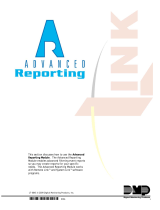 Digital Monitoring Products Advanced Reporting User guide
Digital Monitoring Products Advanced Reporting User guide
-
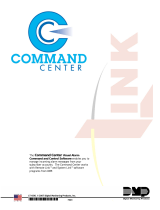 Digital Monitoring Products Command Center User guide
Digital Monitoring Products Command Center User guide
-
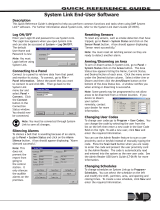 Digital Monitoring Products System Link End Reference guide
Digital Monitoring Products System Link End Reference guide
-
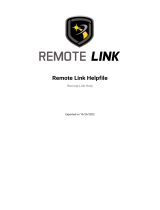 Digital Monitoring Products Remote Link User guide
Digital Monitoring Products Remote Link User guide
-
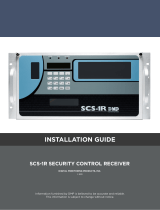 Digital Monitoring Products SCS-1R Security Control RECEIVER Installation guide
Digital Monitoring Products SCS-1R Security Control RECEIVER Installation guide
-
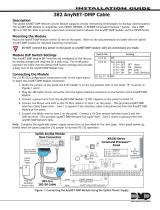 Digital Monitoring Products Anynet User guide
Digital Monitoring Products Anynet User guide
-
 Digital Monitoring Products 725 Installation guide
Digital Monitoring Products 725 Installation guide
Other documents
-
Cisco Systems 5.2.x User manual
-
ACRONIS Storage 2.4 User guide
-
ACRONIS Cyber Infrastructure 3.0 User guide
-
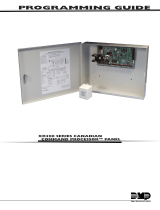 DMP Electronics XR500 User manual
DMP Electronics XR500 User manual
-
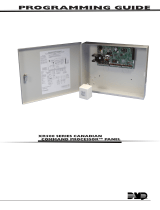 DMP Electronics XR500E SERIES Programming Manual
DMP Electronics XR500E SERIES Programming Manual
-
QNAP TS-639 Pro Turbo NAS User manual
-
QNAP TS-109 User manual
-
Symantec Veritas Cluster Server 5.0 Update 3 User manual
-
Parallels Plesk Billing 6.0 User guide
-
LaCie Ethernet Disk mini-Home Edition User manual





























